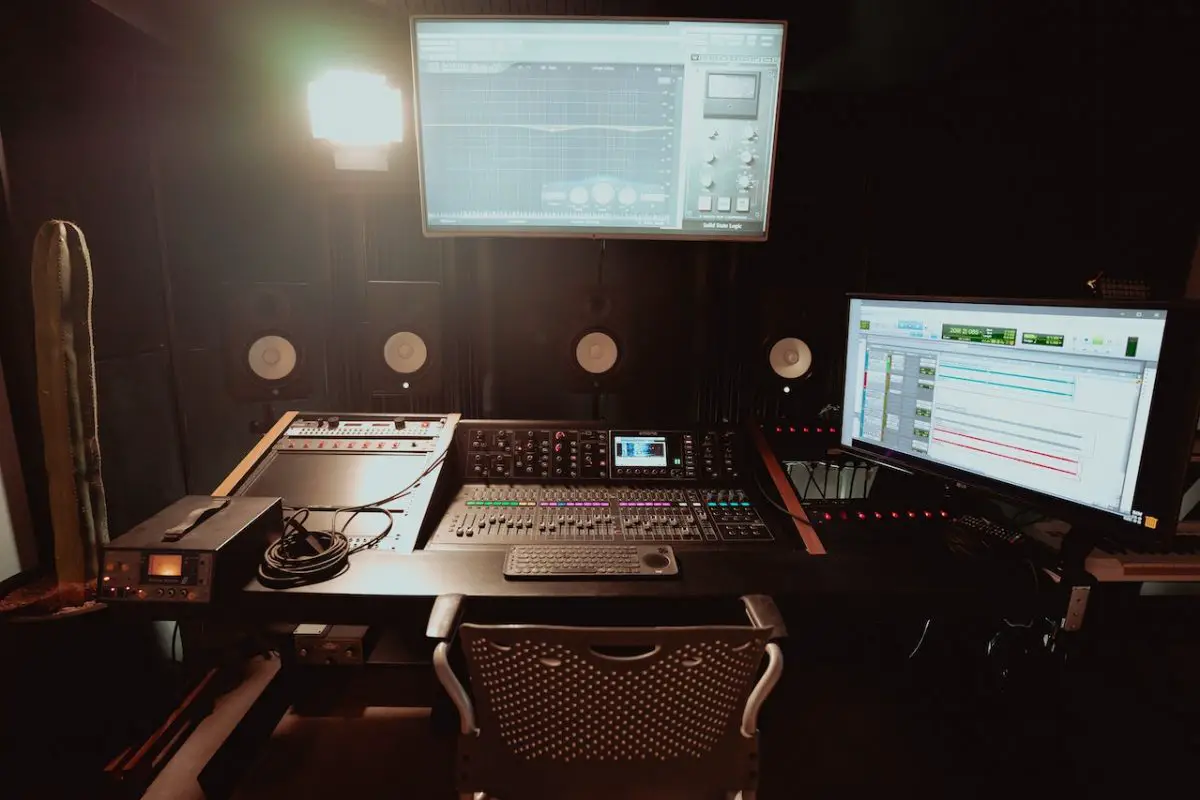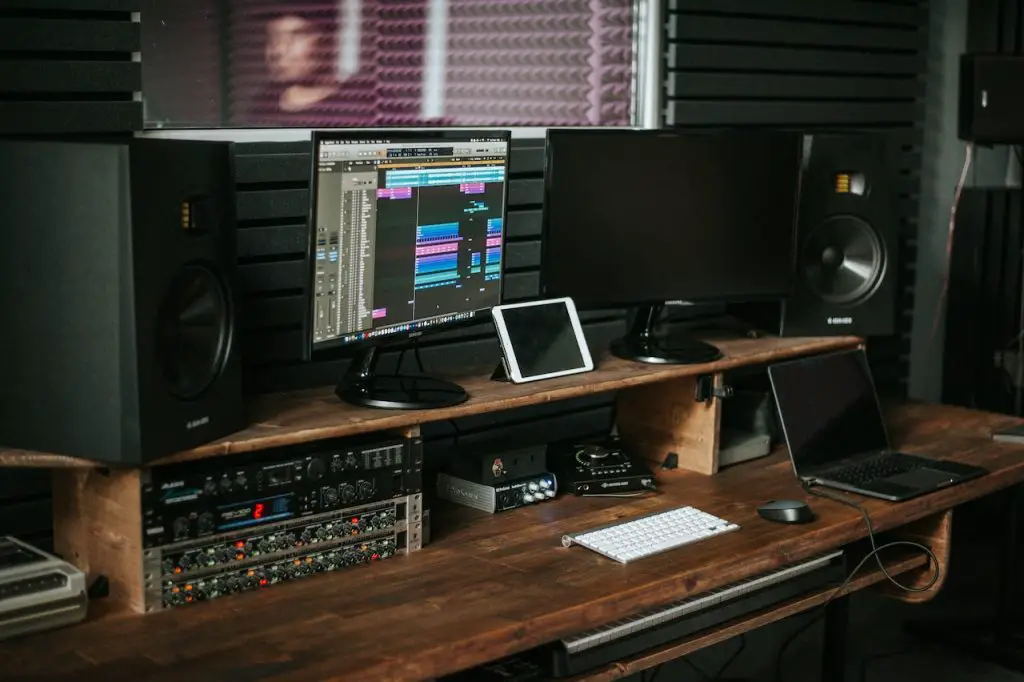Are you curious about the secret weapon behind the polished sound of your favorite songs? Look no further than the mixing engineer’s trusty studio monitors. But why do mixing engineers often use multiple pairs of studio monitors?
In this blog post, we will discover why mixing engineers rely on multiple pairs of studio monitors to perfect their craft. Get ready to take your music production to the next level and unlock the full potential of your sound with this ultimate guide to studio monitor usage. So if you’re a professional who wants to use multiple studio monitors or is just curious about the results of using one, this post is for you!
Why do mixing engineers use multiple pairs of studio monitors? The wide variety of speakers, earphones, and headphones used by listeners is simulated by mixing engineers by using more than one set of monitors. The engineer may then produce a mix that will sound good on all of the listeners’ devices.
What is a studio monitor?
A studio monitor is a special kind of loudspeaker made for professional audio production, like in recording studios, radio stations, and post-production houses. They are designed to be as accurate and neutral as possible, allowing audio engineers to hear a true representation of the audio and make precise adjustments during the recording, mixing, and mastering processes. They come in different designs, such as active and passive, nearfield, or midfield.

AKAI Professional MPK Mini MK3

AKAI Professional MPK Mini MK3
Why do mixing engineers use multiple pairs of studio monitors?
Mixing engineers use multiple pairs of studio monitors for several reasons:
1. Room acoustics
The sound of a room can greatly affect the way audio is perceived. Having multiple monitors in different locations allows engineers to understand how the audio will sound in different environments and adjust accordingly.
2. Frequency range
Different monitors can have different frequency ranges, which can affect the way that certain frequencies are perceived. Using multiple monitors allows engineers to hear how different parts of the audio spectrum are represented and make adjustments to ensure that everything sounds balanced.
3. Personal preference
Every individual has their preference for how a mix should sound, and certain monitors can bring out certain characteristics of the mix that others might not be able to. Engineers can use different monitors to compare how a mix sounds on different speakers and make adjustments to achieve the desired sound.
Using multiple pairs of studio monitors allows mixing engineers to get a more complete and accurate representation of the audio they are working on…
4. Mix translation
Engineers want to make sure that the mix will sound good on a variety of playback systems, from expensive studio monitors to low-end laptop speakers and everything in between. Using multiple monitors allows engineers to hear how a mix will translate to different systems and make adjustments to ensure that it will sound good on all of them.
When sound from one frequency range is obscured by sound from another frequency range, the effect is called masking. The masking effect can only be heard on certain monitors, so mixing engineers use multiple monitors to find and get rid of the masking effect in their mix.
Using multiple pairs of studio monitors allows mixing engineers to get a more complete and accurate representation of the audio they are working on and make adjustments to ensure that the final product sounds as good as possible on a variety of systems.
The benefits of using multiple pairs of studio monitors
When an engineer has access to many studio monitors, they can better simulate how a normal person listens. Even the most basic mixing skills, like equalization, compression, and level matching, are put to the test when a mix has to be controlled on more than one monitor system. How the different displays react to changes in the mix will guide the process in different ways.
Practicing with a wide range of speakers not only aids in the development of core skills but also improves one’s capacity to combine imaginatively. Some sets of headphones/monitors will have a greater tendency than others to amplify the effects of processing, such as reverb and delay. This is particularly true when the timespan between each pair varies (wider spacing leads to greater perceived width and a bit less center).
We can compare the two versions of our mix on two different displays to see which one is better. The ability to create a mix that sounds great on any system is called “mix translatability,” and here is where having several monitor sets comes in handy.
Using multiple pairs of different sizes and types
When mixing, the sound may be altered by using a variety of monitors, just as it can be altered by using a variety of studio gear. If you want to hear the low end in a new light, switching to a larger display is a must.
In comparison to a monitor with a five-inch woofer, such as the Yamaha HS5, the eight-inch woofers in a monitor like the Yamaha HS8 provide significantly clearer and more succinct low-end reproduction. The spec sheets for both speakers back this up, showing that the HS8 can produce 38 Hz, whereas the HS5 can only produce 54 Hz.

Many engineers use different kinds of speakers, so the term “studio monitor” might not be clear. Many engineers use consumer equipment like car speaker systems and Bluetooth headsets in addition to professional studio headphones like the Audio Technica M50x to test a mix and find out how the listener hears it.
The most common and cost-effective way studio engineers use this method is with a pair of cheap desktop computer speakers called “mini-monitors.”
Positioning different pairs of monitors
Another less important reason is that there are many sets of monitors strategically placed around a studio. This refers to the “equilateral triangle” method of speaker placement, in which the monitors are at the same distance from the mixing engineer as they are from each other.
Since two sets of monitors can’t take up the same space at the same time, the triangle gets more and more like an isosceles triangle as the distance between the two sets of monitors grows. As long as each screen is at the same distance from the engineer, panning will be consistent. However, the sound at the center may be different due to the interaction of the sound waves with the space.
If you want even more tips and insights, watch this video called “Why Pros Mix on Multiple Monitors. Should YOU??” from the Colt Capperrune YouTube channel.
Frequently asked questions (FAQ)
Do you still have questions about why mixing engineers use multiple pairs of studio monitors? Below are some of the most commonly asked questions.
Can you mix music with one studio monitor?
Even though you can get by with just one studio monitor speaker for casual listening, you should use two in stereo if you want to mix high-quality music.
Do studio monitors need to be a matched pair?
Having a matched pair is preferable as it provides a balanced stereo mix of sounds. If a paired set is not available, identical monitors from the same brand can still be used, and as long as the monitors are of good quality, they should be consistent enough to be matched with any other same-model monitor.
Can you use two studio monitors as one?
Yes, you can use two studio monitors as one to create a wider stereo image and improve the accuracy of your audio mixing and mastering. To achieve this, you need to set up the monitors as a stereo pair and configure your audio interface or sound card to output a stereo signal to both speakers simultaneously.
Do you need a subwoofer with studio monitors?
Studio monitors come in many sizes to fit in many different rooms. Because low-frequency sounds produce larger waves than high-frequency sounds, recreating them requires larger drivers. You’ll need that boosted low end if you’re doing electronic dance music, rap, or hip-hop and using 5-inch speakers. The good thing is that if you feel that your present setup doesn’t offer enough thud and thunder, you can easily add a precisely matched companion sub later on.
Conclusion
The mixing process is all about getting the perfect sound, and the key to unlocking that sound is in the engineer’s trusty studio monitors. But why do they use multiple pairs? Because one pair isn’t enough! With multiple monitors, engineers can tune the mix to perfection, taking into account room acoustics, frequency range, personal preference, mix translation, and masking effect, ensuring that the final product will sound great on any system.
So, do you prefer to use single or multiple monitors? And did I cover everything you wanted to know? Let me know in the comments section below (I read and reply to every comment). If you found this article helpful, share it with a friend, and check out my full blog for more tips and tricks on music production. Thanks for reading, and never stop making music.
Key takeaways
This article covered why mixing engineers use multiple studio monitors. Here are some key takeaways:
- A studio monitor is a specialized loudspeaker designed for professional audio production, such as in recording studios, broadcast facilities, and post-production houses.
- Mixing engineers use multiple pairs of studio monitors for several reasons.
- When an engineer has access to many studio monitors, they can better simulate how a normal person listens.
- Many engineers use consumer equipment like car speaker systems and Bluetooth headsets to test a mix and find out how the listener hears it.















